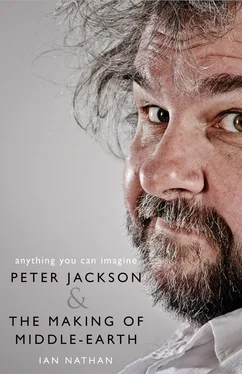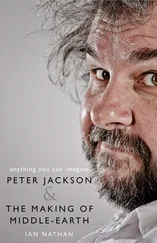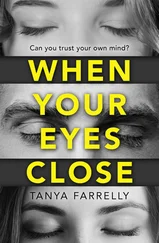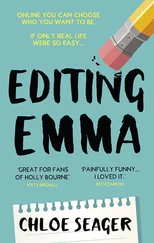Being picked up by Miramax had distinct advantages. Founded in 1979 by the two brothers from Buffalo, brash in manner but brilliantly acute in business, it had risen to prominence through films as diverse as My Left Foot ; sex, lies and videotape ; and Reservoir Dogs . It would rise yet further on the glories of Pulp Fiction and The English Patient to come. Bob Weinstein handled the genre side of the business through the Dimension label, but both brothers always had their say.
The disadvantage was the Weinstein temperament. When things were sunny, all was well. Cross them, particularly Harvey, often over things that ordinarily appear reasonable or, at least, professional, and he would rain down his righteous (or not) fury. It was also a prime negotiating tactic. This was, of course, long before multiple accusations of sexual harassment and worse would bring about an ignominious downfall for the mighty Harvey, sending shockwaves across Hollywood. At this time, he was merely viewed as an industry bully boy.
In 1993, flushed with success, the brothers sold Miramax to Disney for $75 million. They would remain at the helm, with the power to greenlight a film up to the significant figure of $15 million. Any higher and they would require the consent of Disney’s hierarchy. Inevitably, the brothers would come to chafe against such restrictions.
After a lauded run at the box office, and with the assistance of Harvey’s golden touch at the Academy, Heavenly Creatures was nominated for Best Original Screenplay.
‘Boom!’ declares Kamins. ‘The whole perception changed the second the film got nominated. I mean, everything changed — perceptually. Now I got my calls returned and the speed with which I got them returned changed; the kinds of conversations that we were having. Everything shifted. Not even in ways that sort of guided a specific path, but just atmospherically it all felt different.’
Smartly, as well as agreeing a deal to distribute Heavenly Creatures in America, Harvey had insisted on pinning down Jackson to a first-look deal with Miramax. While offering an avenue for any new film idea he might have, it would soon feel like he was tied to Weinstein’s often inflexible apron strings, who now had a prize, Oscar-nominated asset.
Jackson would never bind himself to a studio again. ‘It was sort of a strange thing where they would pay some overheads: an office and some people we could hire. In exchange for that they get first refusal on any script we wanted to do. If they say no that’s fine, you can take it somewhere else. Also if you get offered something you are allowed to go and take it. It is not like an old studio contract where you are locked into MGM.’
He would ultimately never make a film with Miramax.
*
First Jackson met Robert Zemeckis, and together they made The Frighteners , a warped comedy-horror about a spiritual conman (played by Back to the Future ’s Michael J. Fox) who can actually behold ghosts. It was to be Jacksons’ first studio picture. Universal were attracted to a commercial-sounding mash-up of Ghostbusters , the Elm Street movies and this New Zealand hotshot revealing a knack for visual effects.
Fox’s Frank Bannister begins to realize the Northern Californian coastal town of Fairwater (actually Lyttleton in New Zealand) where he plies his supernatural scams is also being terrorized by an undead serial killer in the guise of the Grim Reaper — a killer only he can see. The visual effects requirements were bold: Bannister would interact with a trio of quirky, translucent ghosts, as pliable as cartoons, as well as the Reaper figure, which flits across town like a runaway kite (and not dissimilar in appearance to Ringwraiths). It would take six months to complete, with scenes being shot in duplicate to insert the ribald ghosts. Jackson’s Sitges friend Rick Baker would provide the rotting-corpse make-up for the dread departed.
Sprawling and tonally uncertain, yet still underappreciated, The Frighteners tends to be forgotten in the journey between the early splatters to the coming of age with Heavenly Creatures , which is seen to segue straight into Middle-earth. If anything, it is viewed as a backwards step in the direction of the rabble-rousing days of those early horror movies.
To Jackson’s mind, here lies the true point of transition to The Lord of the Rings . Without it spans a different career, one that might have made him less global, but no less valuable; making films with more of a New Zealand spirit like Jane Campion. But Jackson’s instincts were always toward the commercial.
The project had begun life out of desperation. With Heavenly Creatures still awaiting the go-ahead, Jackson and Walsh were badly in need of some work. ‘They needed to make some money,’ clarifies Kamins.
Jackson had sounded urgent on the phone. ‘We need a writing job. What’s out there?’
Fortuitously, Kamins had been in a staff meeting where he had heard about Zemeckis’ involvement in Joel Silver’s portmanteau Tales from the Crypt movie. Different directors would provide their own segments of horror, and Zemeckis, he was told, was still in need of a screenplay. Springing into action, Jackson and Walsh worked up a two-page outline based on an idea they’d had while walking to the shops for milk, the story of a conman who is in cahoots with ghosts. Zemeckis was intrigued. At that stage, he hadn’t even realized Jackson was a director; he just figured they were these quirky writers from New Zealand.
‘I tell you what,’ said Zemeckis, ‘you go write the screenplay, I’ve got to make this movie called Forrest Gump. ’
‘Well, that’s fine,’ replied Jackson, ‘because we have this movie we’re going to make called Heavenly Creatures .’ They would work on The Frighteners script while shooting their matricidal drama – the two being closer in theme than is immediately apparent.
Then fate got involved: Forrest Gump became an Oscar-winning phenomenon and Zemeckis lost his taste for a Tales from the Crypt movie. Now very much aware of Jackson as a director, Zemeckis suggested he direct it as a standalone film, which he would produce for a budget of $26 million.
‘ The Frighteners matters for two key reasons,’ says Kamins. ‘Number one: it allowed for the build-up of Weta Digital conceptually, which had been a very small unit on Heavenly Creatures . The Frighteners would require over 500 visual effects shots, even at that budget, and Peter had the vision to say, “We can create a bigger visual effects company.”’
Jackson’s plan was typically practical, typically New Zealand: they would lease more computers from Silicon Graphics, then hire out-of-work animators from all over the world, people who were just sitting at home, and double their weekly salaries to come to New Zealand. The only overheads would be space. They would still be able to create visual effects shots much cheaper than ILM. And, sure enough, that’s what happened.
The Frighteners also matters, adds Kamins, because Zemeckis and his partner Steve Starkey would give Jackson and Walsh invaluable tuition on how to navigate the political waters that come with a studio project: ‘What they need to know and when; how to manage their expectations; when to get them excited about things; and when to hold back on information; how to keep them confident, but not in your hair.’
So coming full circle, as Weta were revealing their potential on the visual effects on The Frighteners , Jackson and Walsh’s thoughts turned to the future and the potential of making a fantasy film. However, one morning’s casual discussion was actually several weeks of brainstorming fantasy concepts. ‘It had been a long time since I had read The Lord of the Rings ,’ admits Jackson. Fifteen years had now passed since he had waded through the Bakshi tie-in edition, and he really couldn’t remember it at all well.
Читать дальше












